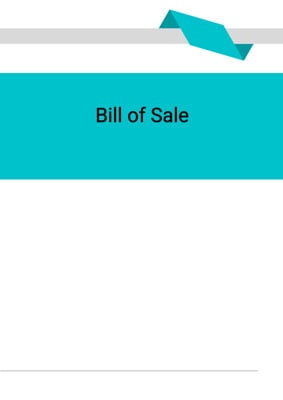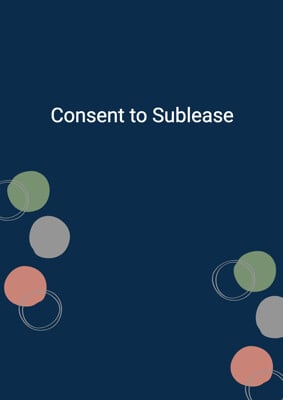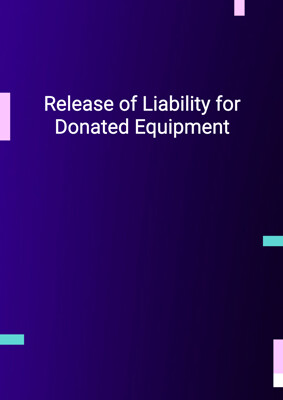How to Tailor the Document for Your Need?
01
Create Document
Fill in the details of the parties. You can click the "Fill with Member’s Information" button to complete it with information saved to your account.
02
Fill Information
Please fill in any additional information by following the step-by-step guide on the left hand side of the preview document and click the "Next" button.
03
Get Document
When you are done, click the "Get Document" button and you can download the document in Word or PDF format.
04
Review Document
Please get all parties to review the document carefully and make any final modifications to ensure that the details are correct before signing the document.
Document Preview
Document Description
The Personal Loan Agreement (Individual) is a document that outlines the terms and conditions of a personal loan between a lender and a borrower. This agreement is important as it establishes the legal obligations and responsibilities of both parties involved in the loan transaction.
The entire document is divided into several sections, each serving a specific purpose. The interpretation section (Section 1) provides definitions for key terms used throughout the agreement, ensuring clarity and understanding for both parties. The loan section (Section 2) states the lender's agreement to advance a specific loan amount to the borrower, setting the foundation for the loan transaction.
The interest section (Section 4) outlines the borrower's obligation to pay interest on the loan amount. It specifies the interest rate, the interest payment date, and the calculation method for accrued but unpaid interest. This section also covers the capitalization of unpaid interest and the borrower's liability for interest in case of insolvency or legal judgment.
The repayment section (Section 5) details the borrower's responsibility to repay the principal outstanding and any other amounts payable. The repayment date is determined according to the agreement, and the borrower has the option to prepay the loan in full or make larger instalments before the prescribed dates of payment.
The payments and taxes section (Section 6) specifies the requirements for making payments to the lender, including the acceptable forms of payment, business hours, and currency. It emphasizes that payments should be made without any deductions or set-offs, including taxes.
The insolvency section (Section 7) states that if the borrower becomes insolvent, the full balance of the loan becomes immediately payable. This provision protects the lender's interests in case of the borrower's financial instability.
The severance section (Section 9) addresses the invalidity or unenforceability of any provision in the agreement. It ensures that if any part of the agreement is deemed invalid, it will be read down or severed without affecting the remaining provisions.
The notices section (Section 10) outlines the requirements for sending notices or other communications related to the agreement. It specifies the acceptable methods of communication, such as in writing, by post, or by facsimile, and provides the addresses and contact details for both parties.
The miscellaneous section (Section 11) includes provisions regarding the waiver or variation of the agreement, the exclusion of legislation that may affect the borrower's obligations, and the cumulative nature of the rights, powers, and remedies provided by the agreement.
The governing law and jurisdiction section (Section 12) determines the applicable law and jurisdiction for any disputes arising from the agreement. This ensures that both parties are aware of the legal framework that governs the agreement.
Finally, the agreement concludes with a statement that no third party has the right to enforce any of the terms under the agreement, emphasizing that only the parties involved have legal standing to enforce the agreement.
In summary, the Personal Loan Agreement (Individual) is a comprehensive document that covers all aspects of a personal loan transaction. It provides clear definitions, establishes the loan terms, outlines the borrower's obligations, and ensures the protection of both parties' rights and interests.
How to use this document?
1. Review the interpretation section (Section 1) to understand the definitions of key terms used throughout the agreement.
2. Read the loan section (Section 2) to understand the lender's agreement to advance a specific loan amount to the borrower.
3. Familiarize yourself with the interest section (Section 4) to understand the borrower's obligation to pay interest on the loan amount. Pay attention to the interest rate, interest payment date, and calculation method for accrued but unpaid interest.
4. Understand the repayment section (Section 5) to know the borrower's responsibility to repay the principal outstanding and any other amounts payable. Take note of the repayment date and the options for prepayment or larger instalments.
5. Review the payments and taxes section (Section 6) to understand the requirements for making payments to the lender. Ensure that payments are made without any deductions or set-offs, including taxes.
6. Be aware of the insolvency section (Section 7) and understand that if the borrower becomes insolvent, the full balance of the loan becomes immediately payable.
7. Take note of the severance section (Section 9) and understand that any invalid or unenforceable provision will be read down or severed without affecting the remaining provisions.
8. Familiarize yourself with the notices section (Section 10) to understand the requirements for sending notices or other communications related to the agreement. Use the provided addresses and contact details for effective communication.
9. Understand the miscellaneous section (Section 11) and be aware of the provisions regarding waiver or variation of the agreement, exclusion of legislation, and the cumulative nature of rights, powers, and remedies.
10. Note the governing law and jurisdiction section (Section 12) to determine the applicable law and jurisdiction for any disputes arising from the agreement.
11. Finally, remember that only the parties involved have the right to enforce the terms of the agreement. No third party has the legal standing to enforce any of the agreement's terms.
Not the right document?
Don’t worry, we have thousands of documents for you to choose from:


















